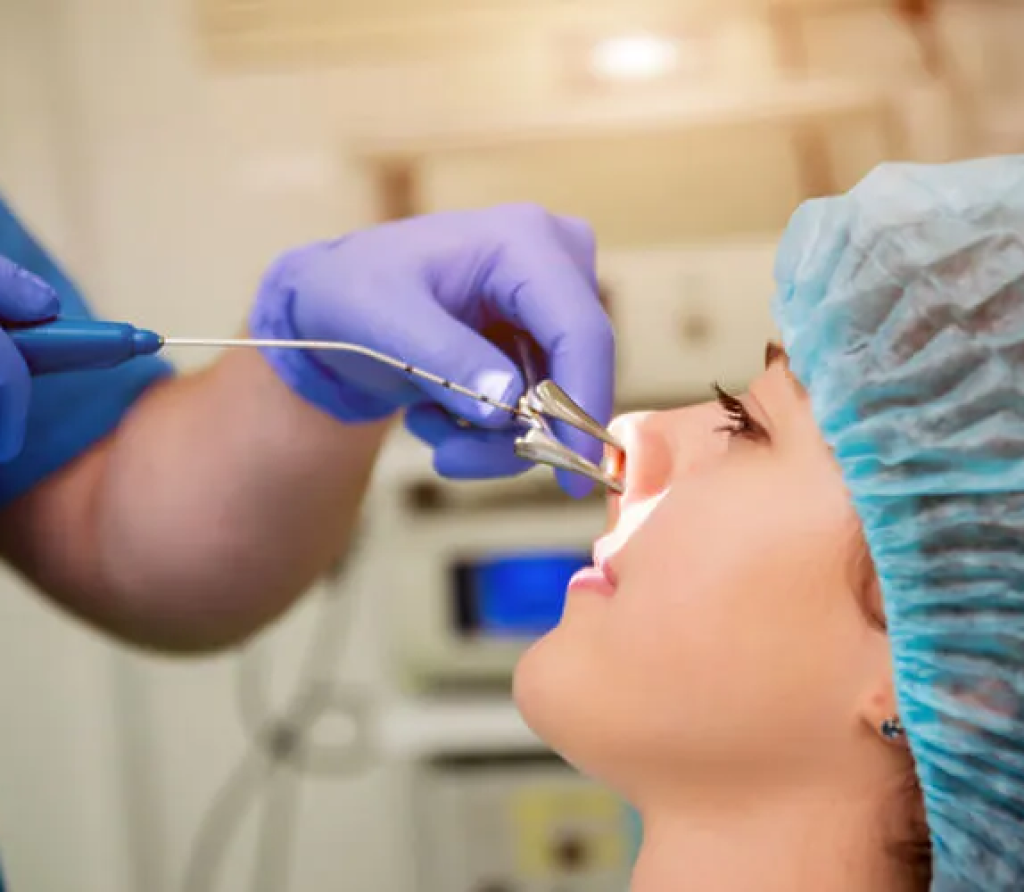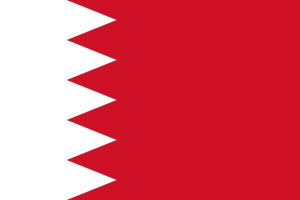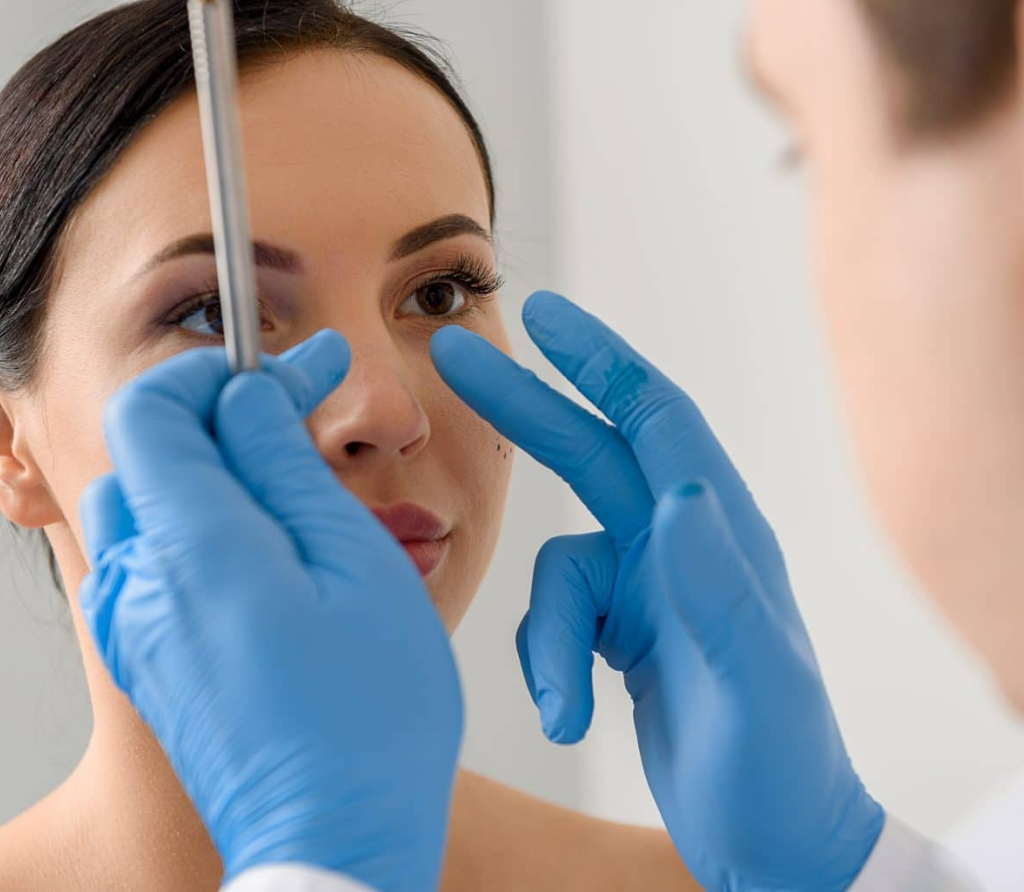Turbinoplasty in Bahrain: What is it?
Turbinoplasty or Turbinate Reduction Surgery aims to increase airflow by shrinking the size of the turbinates in the nose.
Turbinates, coated in glandular tissue that secretes mucus, resemble cushions on the nose’s side containing bone. Allergies, illnesses, and temperature fluctuations occasionally cause these turbinates to swell up and clog your nose.
Should this obstruction persist and interfere with your day-to-day activities, you can find a solution at Stanford Clinic, where a team of experts will guide you through Turbinoplasty in Bahrain.
The turbinate reduction surgery has a success rate of more than 80% overall. Although the tissue surrounding your turbinates may eventually regenerate, many people feel that turbinate removal produces satisfying outcomes.
Why is turbinate reduction surgery done?
- To alleviate persistent nasal congestion
- To rectify and enhance respiration during a septoplasty procedure for a deviated septum
- As sleep apnea treatment
- Boost nasal chamber airflow
- Expand the nasal chambers
- Nasal sprays usually alleviate turbinate-related problems. If the patient is allergic to nasal steroids or conservative therapies are ineffective, a turbinoplasty may be helpful.
How to decide if you need Turbinoplasty in Bahrain?
A specialist at Stanford Clinic will conduct a physical examination to determine if you need turbinate reduction. To confirm the diagnosis, they may use a nasal endoscopy to thoroughly inspect the inside of your nose.
Initially, a steroid nasal spray or antihistamines may be advised as the first line of treatment. If these treatments are not effective, turbinate reduction surgery may be considered. This procedure is typically indicated when nasal obstruction causes congestion, post-nasal drip, sleep apnea, or other breathing difficulties.
How it works?
Here is an overview of the procedure of Turbinoplasty in Bahrain, from preparation to aftercare tips.
How do you prepare?
- Avoid alcohol consumption and smoking to ensure adequate healing.
- Cleanse your nose regularly with saline solution to keep the nasal passages clean and free from infection.
- To help reduce inflammation, continue using nasal steroid sprays as directed by the doctor.
- Avoid consuming certain medications that may cause blood clotting for at least 2 weeks before turbinate reduction surgery.
What are your options?
Turbinoplasty is performed on both nostrils under general anesthesia. The procedure involves the following tools and techniques:
- Endoscope: A slender, flexible tube with a camera used to continuously visualize and operate inside the nose.
- Microdebrider: A rotary cutting tool used to shave soft bones and cartilage.
- Cauterization: A procedure that involves burning tissues to remove or close off unwanted tissue.
- Radiofrequency: A technique that uses high-frequency electrical current or heat to ablate enlarged tissues.
The procedure
- During the procedure, an endoscope is inserted to inspect the turbinates.
- Surgical tools are then used to reshape and adjust the turbinates through cauterization or radiofrequency methods.
- The turbinates may be reduced based on the patient’s specific condition.
- Turbinoplasty surgery can also be performed with septoplasty or sinus surgery for comprehensive treatment.
Aftercare
After surgery, you may wake up with packing inside your nose to prevent bleeding. It’s crucial not to touch or remove this packing yourself. The medical staff will handle its removal at the appropriate time.
For the First Week After Surgery
- Avoid Blowing Your Nose: This can disturb the healing process.
- Pain Management: If you experience discomfort or pain, inform the nurse. Pain is typically manageable with regular painkillers.
Recovering at home
- You may notice blood stains or a pinkish discharge for a few days; this is normal and should diminish over time, though some spotting may continue for a few weeks.
- Refrain from sports and heavy lifting for at least ten days to avoid moderate to heavy physical activity.
- Wait at least two weeks before resuming active sports, then gradually increase activity levels.
- Avoid straining, such as bending down to pick up heavy objects, as this can strain your nose.
- It is normal for your nose to feel blocked for up to two weeks as swelling decreases.
- Use the provided saline solution to rinse your nose thrice daily to help remove scabs and crusts that form after the operation.
- Avoid smoky and dusty environments, as they can irritate your nasal lining.
- Extreme heat should be avoided, including very hot baths and showers.

Plan your visit to Stanford Clinic and find relief from persistent symptoms
If you’re experiencing ongoing nasal congestion, post-nasal drip, or breathing difficulties, it may be time to consider options like Turbinoplasty in Bahrain at Stanford Clinic.
Our specialists use the latest techniques in Turbinate Reduction Surgery to ensure effective and lasting results.
Don’t let these symptoms impact your quality of life any longer. Book your appointment today and take the first step towards better respiratory health.


